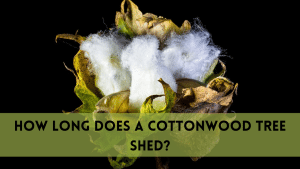When you see a lush garden with gorgeous fig trees in it, can you picture yourself picking and enjoying delicious fruits straight from your backyard? The good news is that by learning how to cultivate fig trees from cuttings, you may make this desire come true. We will lead you through the straightforward but fruitful method of growing fig trees from cuttings in this in-depth guide.
What You Should Know about Fig Trees
Let’s start with the fundamentals before delving into the fascinating world of grow fig trees from cuttings. Ficus carica, the technical name for fig trees, is a hardy and adaptable plant that can grow in a variety of climates.
Growing fig trees from cuttings is an exciting adventure that guarantees a plentiful yield, regardless of your level of gardening experience.
Making the Correct Fig Tree Cutting Choices
Making the appropriate choice of cuttings is crucial to the success of developing fig trees from them. Start by selecting robust branches that have a diameter of around half an inch. The best time to take these cuttings is in the dormant season, which is usually late winter or early spring.
Make sure each cutting is around 6 to 8 inches long, and ensure it includes a few buds.
How to Grow Fig Trees from Cuttings?
Now that you have your cuttings, it’s time to prepare them for planting. Start by making a clean cut at the bottom, just below a node. Remove any leaves from the lower half of the cutting, leaving only a couple of leaves at the top. This helps to reduce moisture loss and encourages root development.
Choosing the Right Soil and Container
Fig trees prefer well-draining soil, so it’s crucial to choose the right mix. A combination of potting soil and perlite or sand works well. Select a container with drainage holes to prevent waterlogging. Plant the cutting about 2 inches deep, water it thoroughly, and place the container in a warm, sunny location.
Caring for Your Fig Cuttings
Once your cuttings are planted, the waiting game begins. Fig trees are not known for their haste in growth, so be patient. Keep the soil consistently moist but not waterlogged. A misting spray can help maintain humidity around the cuttings. In a few weeks, you should start to see signs of new growth, indicating that roots are forming.
Transplanting Your Fig Tree
When your cuttings have developed a robust root system and have grown to a suitable size, it’s time to transplant them into a permanent home.
Choose a sunny spot in your garden with well-draining soil. Dig a hole slightly larger than the root ball, place your fig tree, and backfill with soil. Water thoroughly to help the tree establish itself in its new environment.
Shaping Your Fig Tree
Pruning plays a crucial role in shaping a healthy and productive fig tree. Once your tree is established, prune during the dormant season to remove dead or damaged branches. This not only promotes overall health but also encourages better fruit production.
Nourishing Your Fig Tree
Figs are relatively low-maintenance, but they do benefit from a little boost of nutrients. During the growing season, apply a balanced fertilizer around the base of the tree. Avoid excessive nitrogen, as it can lead to excessive foliage growth at the expense of fruit production.
Keeping Your Fig Tree Healthy
To ensure your fig tree remains healthy and productive, keep an eye out for common pests like aphids and scale insects. Regularly inspect the leaves for signs of disease, such as leaf spot or rust. If issues arise, address them promptly with appropriate treatments to prevent the spread of pests and diseases.
Enjoying Your Homegrown Figs
After patiently nurturing your fig tree from cuttings to a thriving plant, the ultimate reward comes with the harvest. Figs are ready to be picked when they are plump, soft, and have a rich color. Gently twist the fruit from the tree, being careful not to damage the delicate skin. Freshly harvested figs are a true delight, bursting with flavor and sweetness.
FAQs
What time of year is ideal for taking cuttings to grow fig trees?
The dormant season, which usually occurs in late winter or early spring, is the best time to take cuttings for fig plants. At this point, the tree is not actively developing, which encourages healthy root growth.
How long does it take cuttings from fig trees to take root?
Fig tree cuttings take varying amounts of time to root, but in general, you should see new growth within a few weeks. Because fig trees grow slowly, patience is essential.
Which type of soil is ideal for planting fig tree cuttings?
A well-draining soil is preferred by fig trees. To achieve the appropriate drainage, potting soil combined with sand or perlite is a good combination. For multiplication to be successful, the soil must be continuously moist but not soggy.
How often should I give my cuttings from fig trees water?
Make sure the ground surrounding your cuttings of fig trees is regularly moist but not soggy. It is imperative to conduct routine monitoring, particularly in the early phases of growth. To keep the area surrounding the cuttings damp, use a misting spray.
Can I grow fig trees in containers using cuttings?
It is possible to cultivate fig trees in containers using cuttings. Use a well-draining soil mixture, pick a container with drainage holes, and set the container in a warm, sunny area. As the fig tree matures, transplant it into the ground or into a larger container.
Conclusion
In conclusion, grow fig trees from cuttings is a rewarding experience that enables you to see firsthand how a tiny cutting becomes a productive tree.
You may revel in the abundance of your own homegrown figs in your backyard with a little bit of gardening magic, perseverance, and proper care. Now get your pruning shears, roll up your sleeves, and get ready to take on the thrilling task of creating your very own fig sanctuary. Cheers to your successful gardening!





